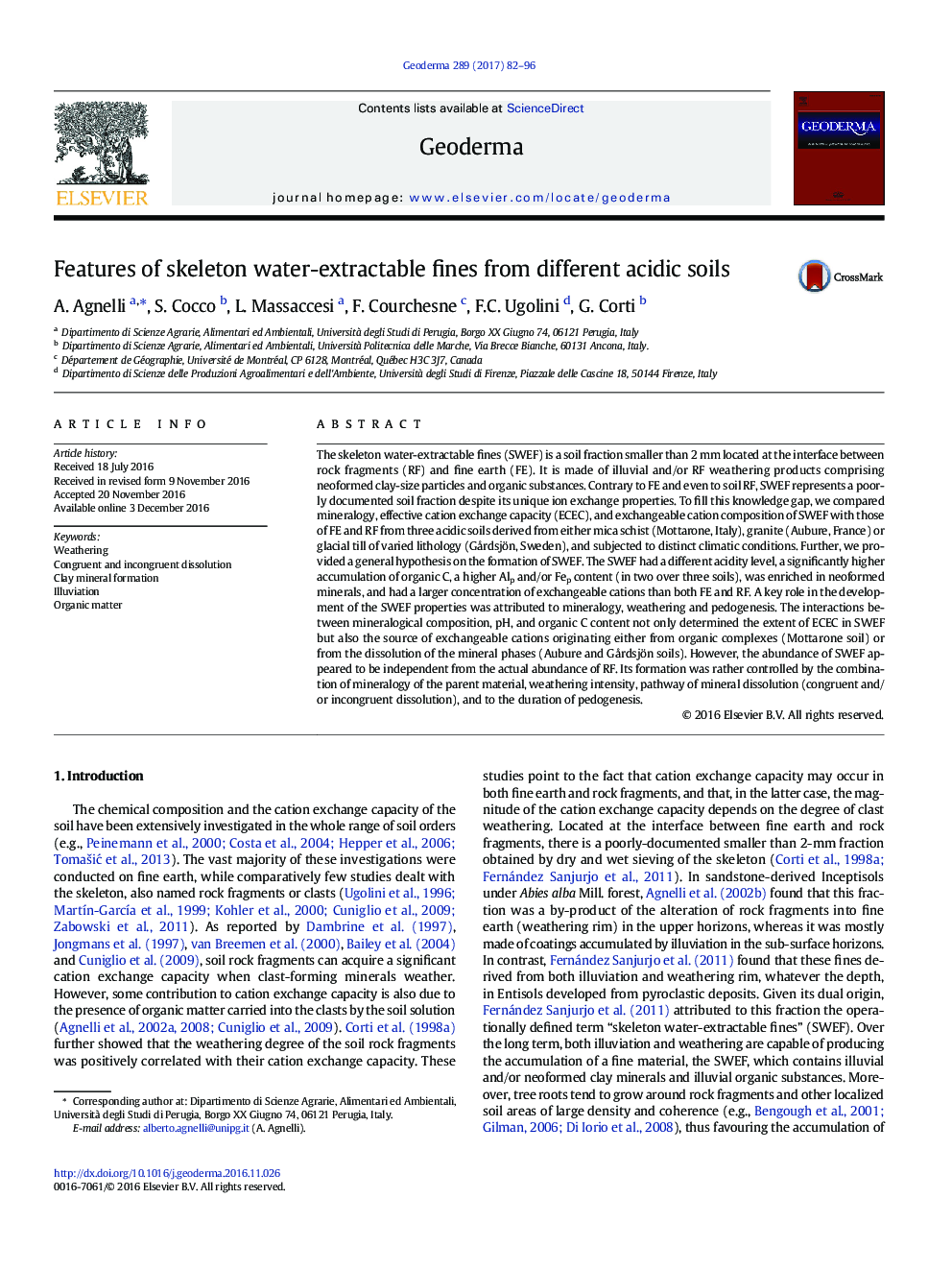| کد مقاله | کد نشریه | سال انتشار | مقاله انگلیسی | نسخه تمام متن |
|---|---|---|---|---|
| 5770716 | 1629428 | 2017 | 15 صفحه PDF | دانلود رایگان |
عنوان انگلیسی مقاله ISI
Features of skeleton water-extractable fines from different acidic soils
ترجمه فارسی عنوان
ویژگی های جلبک های قابل استخراج اسکلت از خاک های مختلف اسیدی
دانلود مقاله + سفارش ترجمه
دانلود مقاله ISI انگلیسی
رایگان برای ایرانیان
کلمات کلیدی
آب و هوا، انحلال سازگار و غیرمستقیم، تشکیل معادن خاک رس، ترسناک مواد ارگانیک،
موضوعات مرتبط
مهندسی و علوم پایه
علوم زمین و سیارات
فرآیندهای سطح زمین
چکیده انگلیسی
The skeleton water-extractable fines (SWEF) is a soil fraction smaller than 2Â mm located at the interface between rock fragments (RF) and fine earth (FE). It is made of illuvial and/or RF weathering products comprising neoformed clay-size particles and organic substances. Contrary to FE and even to soil RF, SWEF represents a poorly documented soil fraction despite its unique ion exchange properties. To fill this knowledge gap, we compared mineralogy, effective cation exchange capacity (ECEC), and exchangeable cation composition of SWEF with those of FE and RF from three acidic soils derived from either mica schist (Mottarone, Italy), granite (Aubure, France) or glacial till of varied lithology (GÃ¥rdsjön, Sweden), and subjected to distinct climatic conditions. Further, we provided a general hypothesis on the formation of SWEF. The SWEF had a different acidity level, a significantly higher accumulation of organic C, a higher Alp and/or Fep content (in two over three soils), was enriched in neoformed minerals, and had a larger concentration of exchangeable cations than both FE and RF. A key role in the development of the SWEF properties was attributed to mineralogy, weathering and pedogenesis. The interactions between mineralogical composition, pH, and organic C content not only determined the extent of ECEC in SWEF but also the source of exchangeable cations originating either from organic complexes (Mottarone soil) or from the dissolution of the mineral phases (Aubure and GÃ¥rdsjön soils). However, the abundance of SWEF appeared to be independent from the actual abundance of RF. Its formation was rather controlled by the combination of mineralogy of the parent material, weathering intensity, pathway of mineral dissolution (congruent and/or incongruent dissolution), and to the duration of pedogenesis.
ناشر
Database: Elsevier - ScienceDirect (ساینس دایرکت)
Journal: Geoderma - Volume 289, 1 March 2017, Pages 82-96
Journal: Geoderma - Volume 289, 1 March 2017, Pages 82-96
نویسندگان
A. Agnelli, S. Cocco, L. Massaccesi, F. Courchesne, F.C. Ugolini, G. Corti,
